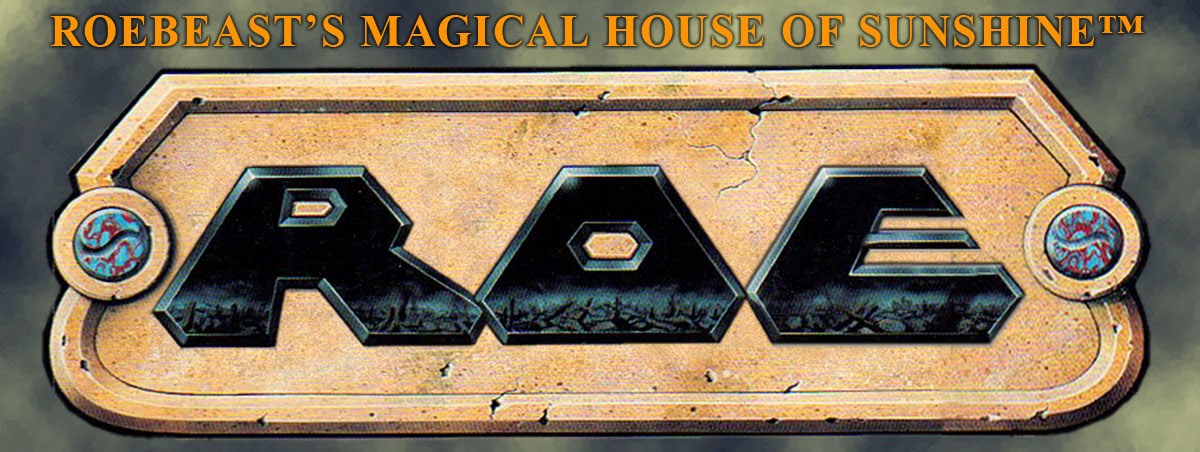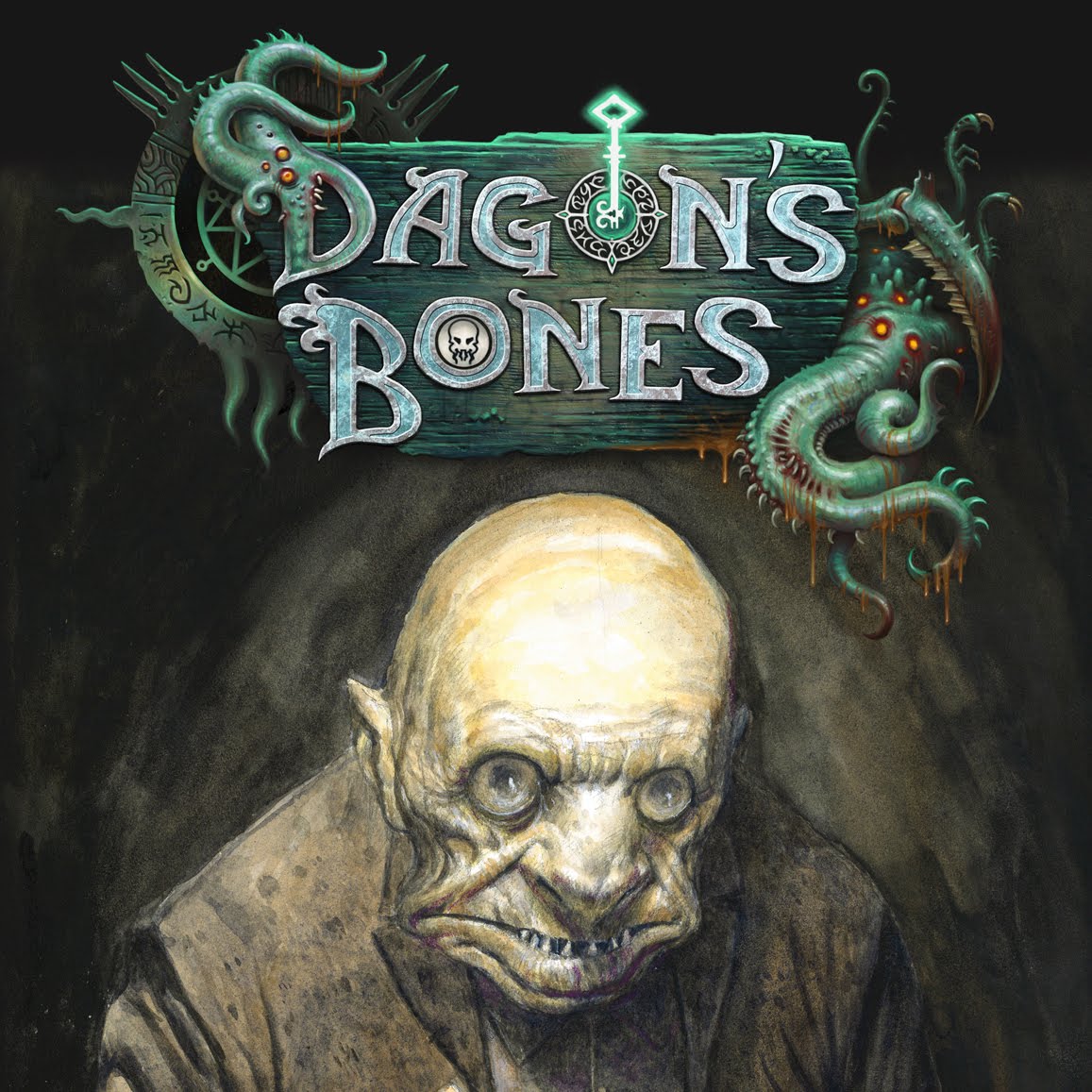Making Wargaming Buildings from Papier-mâché
by Brian S. Roe
 |
| Gangers from the Necro-Mags take on a cargo walker outside of a scientific research bunker. Miniatures by Reaper, Mongoose, and NotNorm. |
Papier-mâché was an ubiquitous part of my elementary school years and something that I’ve always taken for granted.We used it for piñatas, masks, and all sorts of craft projects. Although I remember seeing some beautiful railroad layouts created with papier-mâché when I was a kid, I’ve never thought about using it for making buildings and terrain to play games on until a couple of years ago.
I had found some cool plastic containers and wanted to use them for buildings. But the thin plastic was too weak to hold up to serious gaming so I thought of filling them with papier-mâché to strengthen them. Instead I ended up pulling the papier-mâché out of the molds and really liked the way that it looked, like rough, cast concrete. I then started collecting molds to create basic shapes that I could then enhance with other materials like model kit parts, bits of toys, and other more traditional terrain making supplies. Papier-mâché cast in this way resembles cast concrete and can be used for bunkers, defensive fortifications, and futuristic buildings.
 |
| Celluclay and various molds. |
The type of papier-mâché that I use is a pre-made powder called Celluclay. It is made up of paper pulp and a powdered glue that activates when mixed with water. If you can’t find a pre-made type of papier-mâché you can make your own out of newspaper.
To mix Celluclay use a bucket or large bowl that is not overly precious as this stuff can make a real mess of family heirlooms. Add a handful of Celluclay to the bucket and slowly pour in a bit of water to moisten it. I’m always surprised by how little water I actually need to form useable papier-mâché. And the less water you use now the faster your finished piece will dry.
| Work outside if possible and wear a dust mask when pouring and mixing. |
Stir the Celluclay slowly with your hand until the papier-mâché comes together. It should be well mixed with no lumps and it should be fairly dry. If it feels too moist add a bit more powder and work it into the lump.
You can use various plastic items for molds. Food packaging like those used for meat, mushrooms, or noodles work well for bunker type buildings, domes like those from whipped cream topped coffee drinks make great hemispheres. One of my favorite molds is from a microwave Christmas pudding because it is slightly heat resistant and can be put into a very low oven to speed drying.
Once you’ve chosen your mold start working the papier-mâché into the corners and crannies of the mold. Use your thumb to push out any air bubbles that get caught. The more time you take with this step the fewer pits you’ll have in the final piece. Finally, smooth the inside of the piece so that all of the casting is the same thickness. This will help the piece to dry evenly and prevent warping.

Leave the piece to dry for at least twelve hours before you attempt to remove it. This will allow the inside to form a skin of drier papier-mâché and make the whole form more sturdy. Leaving it for a couple of days will guarantee that the piece is firm enough to de-mold. Now put the mold into your freezer for at least four hours. This will freeze the papier-mâché and allow you to de-mold. Now put the papier-mâché piece onto a piece of cardboard and put it back into the freezer without the mold. This will begin to dry the other side of the piece without allowing the piece to warp as it thaws. Leave it overnight.
 |
| Hard frozen papier-mâché just out of the freezer. |
Now take the casting out of the freezer and let it thaw and dry. You can speed this up by placing it in a very low oven with the door slightly opened water vapor to escape. This can take several hours depending on how thick the piece is.
When the piece is totally bone dry you can sand it and add various extra bits to it. Cardboard, plaster and wooden additions can be glued on with wood glue. Use CA glue to prep the papier-mâché when adding plastic pieces. This creates a hard surface for the CA glue to adhere to and strengthens the bond.
First coat papier-mâché with CA glue and then when dry use more glue to adhere the plastic piece.
 |
| Additional parts from Hirst Arts molds, Black Cat Bases and Pegasus Hobbies Platformer sets. |
You can use plaster or more papier-mâché to fill in holes or make additions to the basic shape. You can also glue together two or more finished shapes and then fill in the gaps with more papier-mâché. This can create very biological, organic shapes such as these Roger Dean inspired pod houses.
 |
| Pterro-Man from Forge of Ice. |
Glue the final piece to a piece of masonite with woodglue and texture this with sand to make a base. Give the whole piece a good primer coat of flat spray paint and paint like you would any other building. The texture works really well when drybrushed. A good coat of varnish will help to protect it, I usually use gloss first and then flat.
 |
| Primed in basic flat black. |
 |
| The texture of papier-mâché is great for drybrushing. |
 |
| The finished science bunker. |
 |
| The contrast between different types of materials adds to the visual interest and realism. |
Papier-mâché is a very versatile material and makes strong, lightweight pieces affordably but not necessarily quickly. But working with it is enjoyable and it’s a pretty forgiving material since part of its charm is the rough unfinished look it has when dry. Give it a shot and good luck!
 |
| Even without a lot of extra bits this bunker looks heavy and solid. Elder Things attack UTC exo-troopers on Proxima Tau. Miniatures by Nameless Design. |



















You know, I'm experimenting with something similar ATM, but with cardboard packaging for the mold instead. The inside of the packaging looks great, but the outside isn't convincing enough.
ReplyDeleteThanks for going to the trouble of writing up this tutorial. I'll be stealing that freezing technique I think.
Cheers.
Just a follow up question, how strong is it once finished? I know you said it's strong, but what could you compare it to? polystyrene, balsa, thick cardboard?
ReplyDeleteAlso, what thickness yeilds the best results?
Cheers.
I'd say similar to polystyrene foam as far as holding up weight. But like foam it can tear out in small sections.
DeleteI made a piece with chopped up jute twine to act as a fiber strengthener and it seemed to be really strong and resist cracking.
Great idea. I am going to have to give this a try.cheers.
ReplyDeleteCool modeling!
ReplyDeleteDo you use any kind of mold release?
ReplyDeleteNo because I didn't want any sort of oil or wax on the painting surface. And freezing it seems to shrink the papier mache enough to release it easily.
Delete